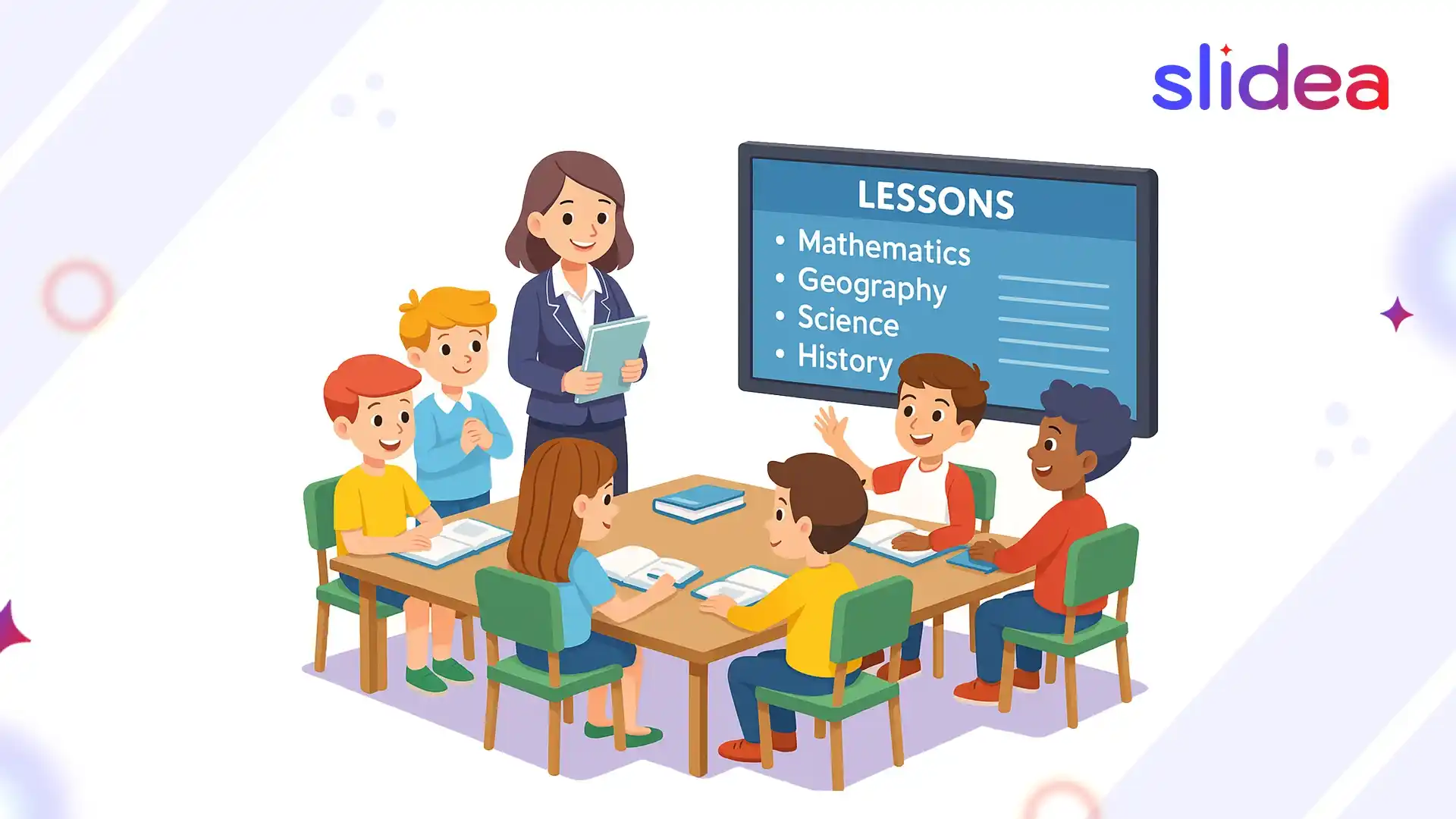In today’s classrooms, virtual, physical, or hybrid inclusion isn’t just a nice idea. It’s essential.
Students come from diverse cultures, backgrounds, and learning styles. Some thrive in discussions; others prefer visuals or quiet reflection. To reach every learner, we must create spaces where all voices feel welcome and valued.
Here’s the good news: Building an inclusive classroom doesn’t require a complete overhaul. With the right tools and small shifts in approach, you can spark meaningful change. Using features like live polls, quizzes, and word clouds within interactive presentation software can help you build trust and connection without putting anyone on the spot.
Let’s walk through how to create a classroom environment that’s engaging, inclusive, and designed for everyone to succeed.
Understanding True Classroom Inclusion
Inclusive education means designing lessons that support all students from the start, not making adjustments later. Today’s classrooms are rich in diversity, with students bringing different backgrounds, abilities, languages, and learning styles.
True inclusion is built on three core principles: accessibility, engagement, and representation. Every student should be able to access materials, participate fully, and feel seen in what they learn.
Interactive tools for students help bring these principles to life through multimedia, real-time feedback, and flexible participation, making learning more inclusive and effective for everyone.
The Real Impact of Inclusion in Today’s Classrooms
Creating an inclusive space goes far beyond grouping students by abilities or adding cultural holidays to a calendar. It means giving every student a voice, recognizing their strengths, and encouraging respectful dialogue.
Inclusive environments help students:
- Feel safe and respected
- Build confidence to share their ideas
- Work better in teams
- Improve academic and social outcomes
- Prepare for real-world collaboration
In hybrid events or virtual meetings, inclusion can feel even more challenging but also more important. Students who don’t feel seen or heard are more likely to disengage. That’s why building a responsive and welcoming environment is key.
6 Ways to Create an Inclusive Classroom Experience
1. Use a Variety of Interaction Tools
Some students love speaking up. Others prefer typing, clicking, or drawing. Offering different ways to participate helps everyone feel included.
✅ Try this:
- Use live polls to get instant input without calling on individuals
- Let students respond with emojis or word clouds to express how they feel
- Create anonymous quizzes to test understanding without pressure
2. Start with Connection, Not Just Content
Kick off your lesson with a short check-in or fun warm-up. A simple “How are you feeling today?” word cloud or mood emoji poll can help you see who might need extra support.
3. Invite Multiple Perspectives
Encourage students to share their views and listen to others with respect. Present open-ended questions during class discussions and use tools that allow for multiple correct answers or responses.
4. Keep Accessibility in Mind
Make sure your content is readable, clear, and visually supportive:
- Use high-contrast text and simple fonts
- Add captions or summaries to Visual slides
- Record virtual meetings for those who can’t attend live
These small actions help all learners keep up, especially those with visual, hearing, or learning differences.
5. Encourage Safe Participation
Participation shouldn’t feel scary. Give students chances to respond without speaking aloud. Using interactive slides lets them type, vote, or react at their own pace.
6. Celebrate Diverse Contributions
Highlight unique answers and celebrate creative thinking. When students see their ideas on the screen via word clouds or polls, they feel recognized and encouraged to share more.
Final Thought: Inclusion Is Ongoing, Not One-Time
Creating an inclusive classroom is a continuous journey. It’s about making sure students don’t just attend class but actually belong there. With simple changes and the right interactive tools, you can turn your lessons into welcoming spaces where every student feels heard, seen, and inspired to participate.
Create your presentation with Slidea and build a classroom where every contribution counts online, in person, or anywhere in between.
FAQs
1. What makes a classroom inclusive?
An inclusive classroom values each student’s voice, offers different ways to participate, and respects cultural and learning differences.
2. How can I engage quiet or shy students?
Use tools like polls or interactive slides to let them share without speaking up. Give time for written or digital responses.
3. Can I use interactive tools in physical classrooms, too?
Yes! These tools work great in person, virtually, or in hybrid events, giving you flexibility and consistent engagement.
4. How do I know if students feel included?
Use feedback tools, quick emotion check-ins, and anonymous polls to understand how students are feeling about class culture.
5. What’s the best way to introduce inclusive activities?
Start small, with a quiz, a quick poll, or a slide where students share their responses to spark conversation.




Leave a Comment
Your email address will not be published. Required fields are marked *